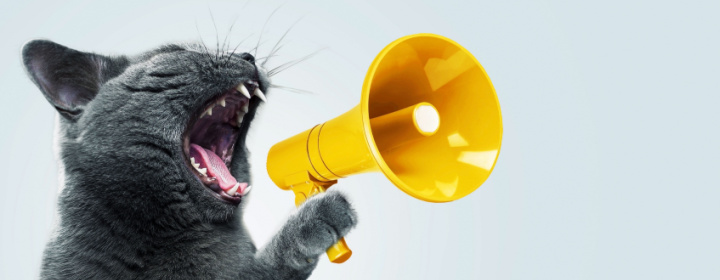
What Your Cat Is Trying to Tell You in St. Louis, MO
What your cat is trying to tell you in St. Louis, MO. Cats are amazing and peculiar animals that have been living side by side with humans since before recorded history. Many people think of them as independent, but this is completely untrue. In actuality, cats are incredibly communicative animals, and they are constantly trying to let their St. Louis, MO owners know something. In this blog post, we'll explore how cats make their feelings known, so you can better understand what your fluffy family member wants and needs.
At Cats Only in St. Louis, MO, we chose our name with a purpose: dogs are not allowed on our property. We know that cats have unique needs, and we always work to treat and handle them in ways they find comfortable. If you need cat grooming, cat boarding, or cat daycare services in St. Louis, MO, call us today at 618-772-8315. Otherwise, keep reading to understand better how your cat is trying to communicate with you.
Purring
Everyone knows the purring sound that cats make, and it's often associated with contentment and relaxation. But, cats also purr as a way to soothe themselves when they're anxious, so it's best to look at their total behavior to be sure about why they are purring. If your St. Louis, MO cat shows other signs of relaxation, then they are likely purring out of contentment. On the other hand, if other indications point to your cat being stressed out, such as dilated pupils, then they may be purring to self-soothe.
Meowing
Meowing is how cats get people's attention. While cats sometimes meow at each other, they primarily use meowing to get a human being's attention. The tone, duration, and frequency of a cat's meow can mean many different thing, from simply saying "hi" to a demand for attention. Pay attention to your St. Louis, MO cat's meows and try to ascertain what they want you to know.
Body Language
Cats are virtuosos of body language, and they use different positioning and movements to tell us what they need. Some signs to look out for include:
- Tail position — The movement and position of a cat's tail follows their mood. A straight tail pointing up into the air is a sign that they feel confidence and contentment, while a tucked tail suggests fear or anxiety. A swishing tail may be a sign of enthusiasm, irritation, or intense focus.
- Ears — A cat's ears can also convey a lot of information. Forward-facing ears indicate interest or curiosity, while ears pointed down toward the side suggest fear or aggression.
- Pupil dilation — A cat's pupils will dilate in response to a variety of stimuli, including excitement and worry. Pay attention to your cat's pupils to get a sense of their emotional state.
- Posture — A cat's body posture can also give you clues about how they're feeling. A relaxed, open posture indicates that they feel relaxed and happy, while a hunched posture indicates they're frightened or aggressive.
Grooming
Cats are fastidious beings and spend 30-50% of their day grooming themselves. Their grooming habits can tell you a lot. For example, if your cat licks your fingers or face, they may be telling you how much they love you. On the other hand, if you notice lesions or lack of fur from over-grooming, it's a sign that they're nervous or anxious. Try to follow your St. Louis, MO cat's grooming habits and look for any changes that could indicate a problem.
Vocalizations
Beyond meowing, cats make a variety of other vocalizations that can convey different messages. Here are some examples:
- Hissing — A cat will hiss when they think they might be in danger. If your cat is hissing, leave them by themselves for a while and try to find out what's scaring them.
- Chirping — Cats will often produce a chirping or trilling sound when they see an animal that they would typically hunt in the wild. This is a natural hunting instinct and a sign that your cat is excited or stimulated.
- Growling — A cat will growl when they feel threatened or aggressive. If you hear your cat growl, leave them by themselves for a minute and avoid approaching them until they're more relaxed.
Scratching
A cat's urge to scratch is natural, and they do it for many different reasons, including sharpening their claws. However, if your cat is scratching excessively or in the wrong places, they could be anxious. Giving your cat a toy or post to scratch and redirecting their behavior to other surfaces can help relieve these issues in St. Louis, MO.
Litter Box Behavior
Your cat's litter box behavior can also provide information on how they're feeling. If your cat is not using the litter box or shows changes in their bathroom habits, it may be a sign of a medical issue or stress. It's important to address these issues promptly and schedule a visit with your St. Louis, MO veterinarian if the issues doesn't resolve itself. In some cases, you can also try getting a bigger litter box or putting it in a more easily accessible location.

Cat Care in St. Louis, MO | Cats Only
Cats communicate in a lot of different ways, and it's important to pay attention to their body language, vocalizations, and behavior to know how they're feeling and what they need from you. By making the effort to understand your St. Louis, MO cat's communication style and responding appropriately, you can become closer to your fluffy family member and ensure their happiness and well-being. As a cat grooming and boarding business, we understand the importance of communication with cats, and everyone who works here is trained to be able to understand and gently handle cats. We strive to provide the best care possible to our feline guests. If you need cat grooming, or if your cat needs a safe and fun place to stay while you're out of town, please don't hesitate to reach out to Cats Only in St. Louis, MO at 618-772-8315.

